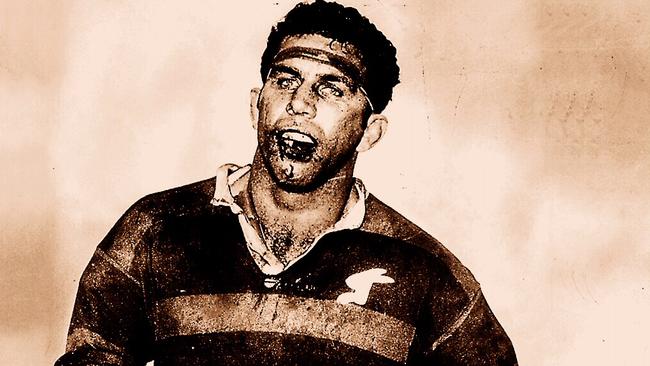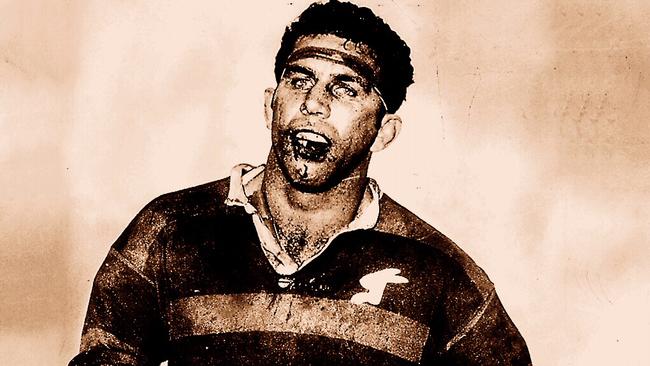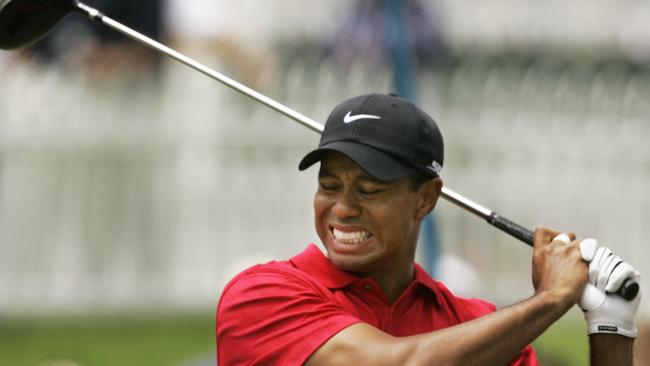Pushing through the pain barrier tests sports’ finest
When a player gets a bad knock on the sporting field sometimes it can take them on to greater sporting glory.

Today in History
Don't miss out on the headlines from Today in History. Followed categories will be added to My News.
Lismore rugby player Georgia Page is a global social media star this week after footage of her breaking her nose, then getting up to make another tackle during a rugby sevens game in the US on the weekend went viral. The incident has now been seen by more than a million people worldwide.
Hers was not the only tough performance by a sportsperson to make the headlines in the past week after surfer Sally Fitzgibbons braved the pain of a perforated eardrum to win a surfing competition in Fiji.
It is a time-honoured tradition among sportspeople to cop an injury and keep going, play on, don’t give up. In some cases it has ended in tragedy, while at other times the pain has pushed athletes on to greater performances. At the highest levels it often gains the player a place in sporting history.
The records of such courageous performances go back to ancient times. The modern marathon draws its inspiration from the endurance of a messenger who ran about 40km from the battlefield at Marathon to Athens in 490BC to deliver news of victory over the Persians. The runner Pheidippides shouted “Victory!” and then dropped dead.

It wasn’t that he was out of condition, just that he had all but exhausted himself the day before by running to Sparta and back to request help from the Spartans in the fight against the Persians. His feat was immortalised in poetry, art and later the race, in which there have been many equally gutsy long-distance running performances.
Following in Pheidippides’ footsteps in 1982 was US runner Guy Gertsch who ran 30km of the Boston Marathon with a broken thigh bone. He said at the time if it had been a lesser race he might have contemplated giving up “But this is Boston. I came a long way to run it.”
It was a similar story for Tanzanian runner John Akhwari, who dislocated his knee and injured a shoulder at the 19km point of the marathon at the 1968 Mexico City Olympics, but kept running, finishing last. When asked why he didn’t quit, he said: “My country did not send me 5000 miles to start the race; they sent me 5000 miles to finish the race”.
Another ancient athlete who pushed through the pain barrier was Arrichion, a champion of Pankration, an extreme form of fighting that mixed boxing and wrestling and in which only biting and eye gouging were banned.
Arrichion was defending his title at the Olympic Games in 564BC. It was an intense struggle with both competitors locked together in powerful holds. Arrichion then dislocated his opponent’s toe, and the man, in pain, held up a finger to signal submission.
Arrichion was declared the winner, but when the referee held up Arrichion’s arm to declare him the victor he discovered that the athlete was dead.
German-born soccer goalie Bert Trautmann narrowly averted death in the 1956 FA Cup final. In the 75th minute of the game Trautmann was knocked out when Birmingham player Peter Murphy’s knee bashed him in the neck. He continued playing because there were no substitutes, made a couple of saves and Manchester City won 3-1. An X-ray later revealed one of his neck vertebrae had cracked in two.

One of the all-time great stories of a sports star ignoring an injury is that of Australia’s John Sattler, captain of the South Sydney Rabbitohs.
Three minutes into the 1970 NRL grand final against Manly-Warringah, Sattler was hit in the jaw by Manly player John Bucknall. Dazed and in great pain, he asked teammate Mike Cleary to hold him up so the opposition wouldn’t know he was hurt.
He battled on for 77 minutes, often having to stop to push his jaw back into place. When the final siren sounded, he was hailed the hero of Souths’ 23-12 victory.
OTHERS WHO REFUSED TO LIE DOWN
● In 1971 Joe Frazier broke Muhammad Ali’s jaw in the second round. Ali fought on for 15 rounds, eventually losing in a unanimous decision.
● At the 1976 Olympics Japanese gymnast Shun Fujimori broke his kneecap but battled on to win a gold medal.
● Kerri Strug helped the US win a gold medal at the 1996 Olympics despite having to vault with a badly injured ankle.
● Tiger Woods won the 2008 US Open despite cartilage problems with his left knee, no cruciate ligament and two stress fractures in his left tibia.
● In 2012 Katie White won the Liverpool Marathon after snapping her fibula after having run only 8km of the race.

Originally published as Pushing through the pain barrier tests sports’ finest



